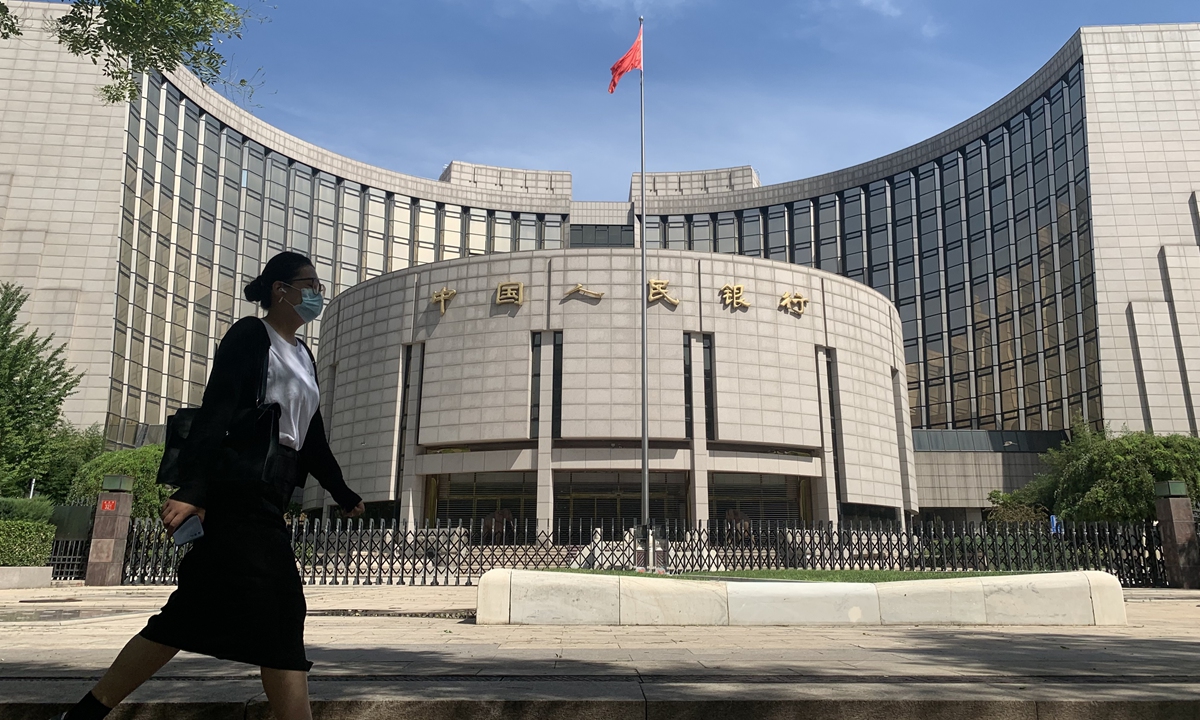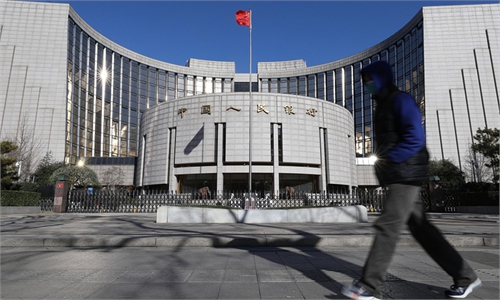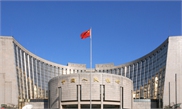China cuts two benchmark interest rates for 2nd time this year to shore up economic growth
Housing sales expected to ratchet up, boosting economic recovery: experts

A view of the PBC building in Beijing on August 22, 2022 Photo: VCG
China's central bank reduced the market-based benchmark lending rate and lowered the mortgage reference rate on Monday in the latest move to spur domestic spending and fire up economic recovery as the impact of COVID-19 persists. In a meeting on Monday, it demanded the reasonable financing needs of property developers be guaranteed.
The one-year loan prime rate (LPR) came in at 3.65 percent Monday, down from 3.7 percent, according to the People's Bank of China (PBC). The over-five-year LPR, on which many lenders base their mortgage rates, was lowered by 15 basis points to 4.3 percent, equal to the biggest cut on record.
It was the second time this year that both the one-year and five-year LPRs were reduced at the same time, following a previous move in January.
The reductions are within analysts' expectations, as the central bank last week lowered a key policy benchmark medium-term lending facility (MLF) by 10 bps to 2.75 percent, after keeping it unchanged for six months.
"The cuts are timely, as the market needs more positive signals to ratchet up confidence after the release of lower-than-expected economic figures in July," said Yang Delong, chief economist at Shenzhen-based First Seafront Fund Management Co.
In July, new social financing, a measure of funds that individuals and non-financial firms receive from the financial system, came in at 756.1 billion yuan ($110.55 billion), down 319.1 billion yuan from the same month last year, according to data released by the central bank.
Yang said the monetary policy easing tells China's policy-making wasn't affected by the US Federal Reserve's sizable interest rate hikes. Given the priority of stabilizing Chinese economy, the central bank's move will be conducive to maintaining sufficient liquidity and supporting capital demand of enterprises.
Yan Yuejin, research director at Shanghai-based E-house China R&D Institute, told the Global Times on Monday that a cut of 15 bps for the five-year LPR is slightly beyond expectations, underscoring the urgency of reducing the cost of medium- and long-term borrowing.
The move will further reduce the financing costs for enterprises and individuals and effectively stimulate credit demand, according to Yan. "For 30-year mortgages of 1 million yuan, the five-year LPR cut would reduce monthly installment payments by up to 100 yuan," he said, noting that the move would continue to boost the recovery of the real estate sector.
In the first seven months of the year, the country's property investment dropped 6.4 percent year-on-year, and sales of commercial housing fell 28.8 percent year-on-year, according to data from the National Bureau of Statistics (NBS).
Despite stalled property delivery in some Chinese cities, the construction of property projects across the country remains stable and the overall risk is manageable, NBS spokesperson Fu Linghui said recently.
"The country's property market is expected to stabilize and maintain steady and healthy growth in the coming months. The sector's negative impact on the economy will gradually subside," he said.
There is room for further easing the monetary policy, which will mainly be determined by whether there is a marked improvement in urban property sales, Li Xunlei, chief economist at Zhongtai Securities, told the Global Times on Monday.
"If the impact of COVID-19 remains serious, and consumers' income and investment expectations keep weak, the mortgage rate may continue to slide," he said, noting that the central bank will resort to tools including cutting deposit interest rates and the requirement reserve ratios (RRR).
In order to restore market confidence and spur consumption, the policy-makers need to resolve the hidden risks in the real state sector, reduce the impact of COVID-19 on the economy, and continue to push up workers' income, Li said.
At a central bank symposium hosted by Governor Yi Gang on Monday, the central banker said the economic recovery is at the most challenging juncture at the moment and called for a sense of urgency in consolidating the foundation of economic recovery.
The central banker urged major financial institutions, especially large state-owned banks, to play a leading role in maintaining growth of loans, and it demanded that the reasonable financing needs of real estate developers be met.
The central bank also asked lenders to speed up loan support to small and medium-sized companies, and those in green and high technology innovations, and enhancing financial support to key internet platforms in accordance with the law.
On Monday, the PBC issued 25 billion yuan worth of central bank bills in the Hong Kong Special Administrative Region, offering more yuan liquidity management tools.
Of the total, 10 billion yuan will mature in three months, and the other 15 billion yuan will mature in one year, with interest rates of 1.9 percent and 2.3 percent, respectively, the central bank said in a statement.


